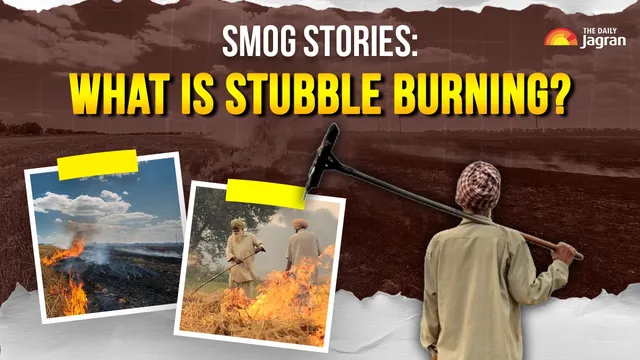- By Soumyaroop Mukherjee
- Sat, 11 Oct 2025 06:42 PM (IST)
- Source:JND
Smog Stories: As the winter’s chill sets in and the festive season draws near, air pollution once again looms large over the National Capital Region, including Delhi and its adjoining cities of Noida, Gurugram and Ghaziabad. Every year, the Air Quality Index (AQI) in Delhi-NCR slips into hazardous or severe plus categories, with hospitals reporting a massive rise in cases of pulmonary and respiratory diseases.
While vehicular emissions, construction dust, and industrial smoke remain major contributors to Delhi’s poor air quality during winters, the city faces an additional “silent killer” in the form of stubble burning.
-1760187798857.jpg)
Stubble Burning Is Rising In Parts Of Madhya Pradesh (Image: Reuters)
Each year, as farmers in Punjab and Haryana set fire to crop residue after the harvest, smoke begins drifting toward the national capital, turning it into a gas chamber. The Kharif harvest and stubble burning cycle typically begins in September, gradually intensifying through October and November. The Supreme Court of India has also vehemently criticised the practice, with CJI Gavai calling for ‘criminal procedures’ against farmers found burning stubble.
So, what is this practice of stubble burning? Let us break down this topic that amplifies the air pollution in Delhi-NCR every year during winter.
ALSO READ: Smog Stories: What Is AQI And How Is It Calculated By Monitoring Major Pollutants In Air? Explained
What Is Stubble Burning?
The practice of stubble burning refers to the burning of leftover straw stubble in the field after harvesting crops like paddy and wheat. The practice is commonly done to clear paddy residues from the field before the sowing of wheat.
After the ripening of grains, such as paddy, corn, etc, the upper portion of the plant is harvested while the lower portion is left behind. This part is called stubble, colloquially called Parali in parts of Punjab and Haryana.
Harvesting in India is currently done with the help of mechanised tools. Due to the machine cutting, the crop is cut from even a greater height, which leaves a significant part of the crop in the land. This leftover part of the crop has no commercial value for the farmers. As a result, farmers often resort to burning crop residues to quickly prepare their fields for the next planting season.
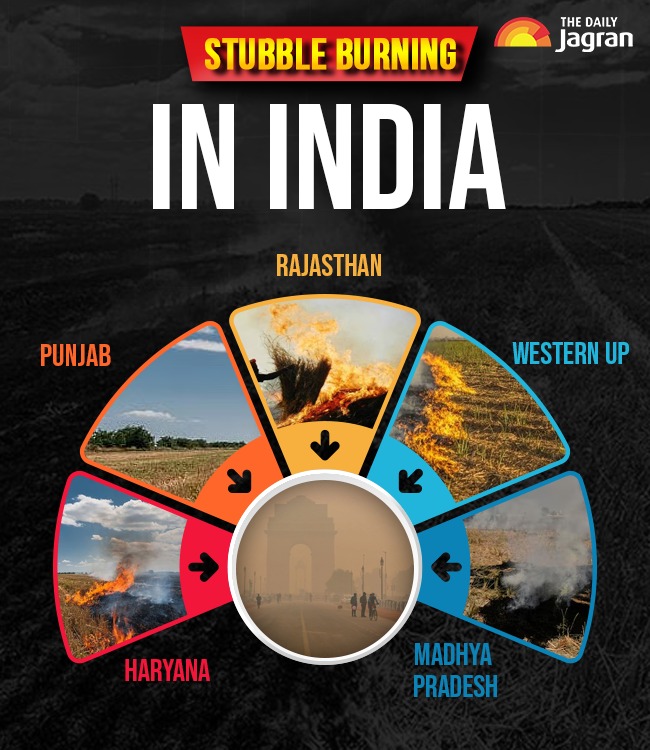
In Which Parts Of India Is Stubble Burning More Prevalent?
The problem of stubble burning started when Punjab was chosen as the experimental lab of the Green Revolution. Farmers were lured to move away from traditional cropping patterns of planting crops like millet, corn, legumes, etc, that provide nutrients to the soil. These were replaced with hybrid varieties of rice and wheat.
But these hybrid varieties of rice and wheat usually have shorter straws (the end of the crop) with a high percentage of silica content in them, which makes them inedible for cattle usage, prompting the farmers to burn them.
Over the years, the use of HYV seeds for cropping was extended to parts of Haryana, Western UP, and Punjab, leading to an increase in stubble burning in these states. Traditionally, the practice of stubble burning is a seasonal practice done between September and November, before the harvesting of the rabi crops, mainly with the paddy crops.
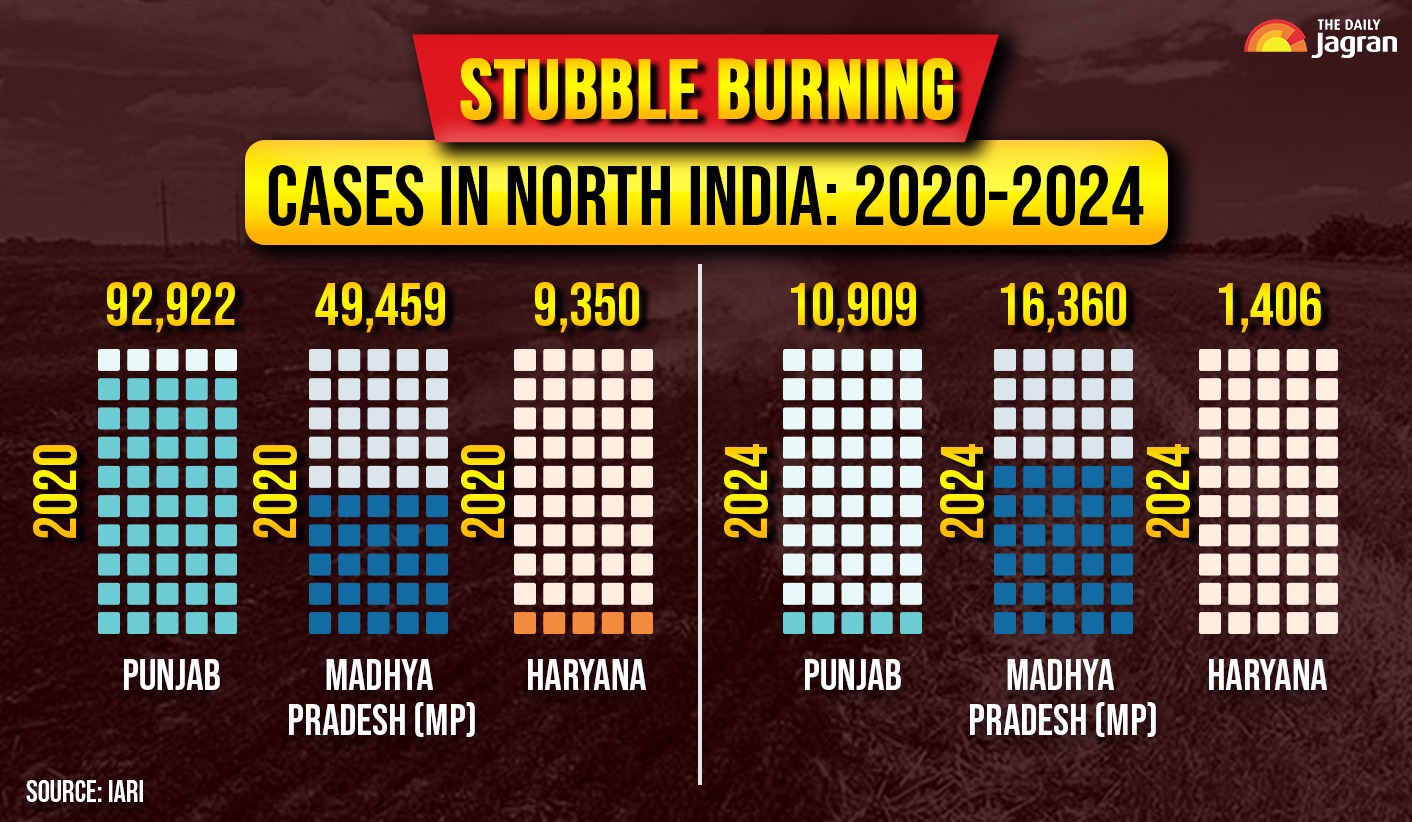
Why Is This Practice Harmful?
Impact on Air Quality: The combustion of crop residues releases particulate matter, PM10, PM2.5, NOx, methane (CH4), carbon monoxide (CO), and volatile organic compounds (VOCs), contributing to degraded air quality in Delhi and other rural and urban areas located nearby.
Impact on Soil Health: Burning crop residues leads to the loss of organic matter from soil and affects fertility, water retention capacity, and overall health of agricultural soils.
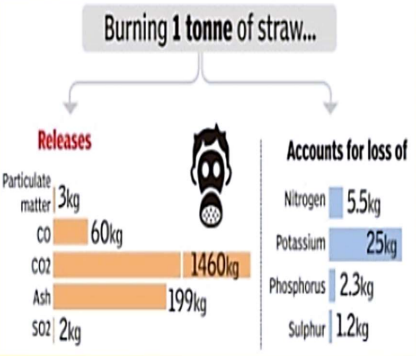
Harmful Effects Of Stubble Burning (Image Credit: National Rural Livelihood Mission)
Loss of biodiversity: Intense heat from stubble burning also affects biodiversity by eliminating the natural habitat of small animals, earthworm population, and beneficial microflora and microfauna.
ALSO READ: Smog Stories: Can Green Firecrackers Really Make Delhi’s Diwali Less Polluted?
Why Farmers Continue To Burn Stubble Despite Legal Consequences?
Even after legal regulations by the CPCB, the Air (Prevention and Control of Pollution) Act, 1981, this practice is widely followed by the farmers in northern India because:
Time Constraints: Stubble burning is a quick alternative for the farmers to save time for the next crop (which is usually wheat) as compared to clearing crop residue from the farm lands.
Cost-Effective: Removal and recycling of crop residue is a very capital-intensive process. So, farmers are left with no other alternative other to burn the field.
Labour Shortage: Shortage of agricultural labour during the peak crop seasons is a common phenomenon in Indian villages, with most of the family members involved in the process of farming. Due to this, residue burning emerges as an important means to remove crop residues.
Limited Technology: Lack of modern-day agricultural equipment and their high cost also forces the farmers to resort to residue burning.
How Can Stubble Burning Be Stopped?
While stubble burning remains a widespread practice in the northwest part of the country, many agricultural practices can act as possible alternatives:
Rotavator: The agricultural process used for land preparation and incorporation of crop stubble in the soil.
Baler: An agricultural equipment that is used for the collection of leftover straw, which is later used for making bales of paddy stubble.
Paddy Straw Chopper: Another agricultural equipment used for cutting paddy stubble, easily mixing with the soil.
Zero Till Seed Drill: An agricultural practice where seeds are directly sown in the previous crop stubble, thereby removing the need to burn the stubble.
PUSA Decomposer: A bio-enzyme developed by ICAR in 2020, which can decompose the stubble in 20-25 days. When this bio-enzyme is sprayed on the stubble, it turns the crop residue into usable manure. It leads to an increase in organic carbon and soil health while significantly reducing the fertilizer expense for the next cropping cycle.
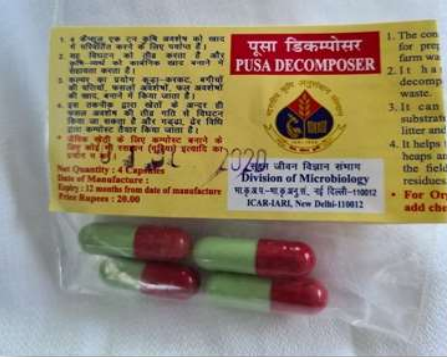
Governmental Initiatives:
Crop Residue Management Scheme: Under this scheme, financial assistance of up to 50% of the cost of the machine is provided to the farmers for the purchase of crop residue management machinery and 80% for the projects costing up to Rs. 30 lakhs is provided to Rural Farmers Panchayats for the establishment of Custom Hiring Centres (CHCs) of crop residue management machines. The scheme promotes the usage of machines and equipment such as Super Straw Management System, Happy Seeder, Super Seeder, Smart Seeder, Surface Seeder, Zero Till Seed cum Fertilizer Drill, etc.
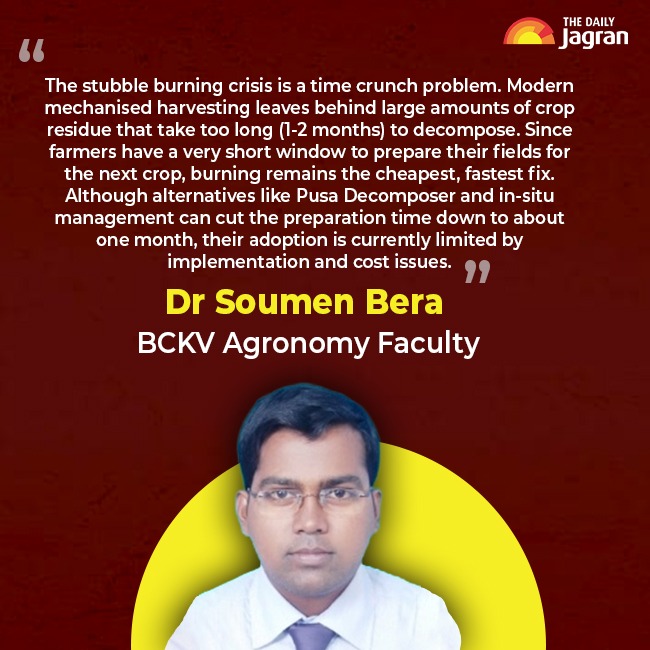
Mera Pani Meri Virasat: The Haryana government's scheme provides a grant of ₹7,000 per acre to encourage farmers to shift from paddy to less water-intensive crops, reducing the amount of paddy straw generated.
Pradhan Mantri JI-VAN Yojana: Under this scheme, several Central Public Sector Undertakings (CPSUs) are setting up Second Generation ethanol bio-refineries across India to produce ethanol from crop residue.

